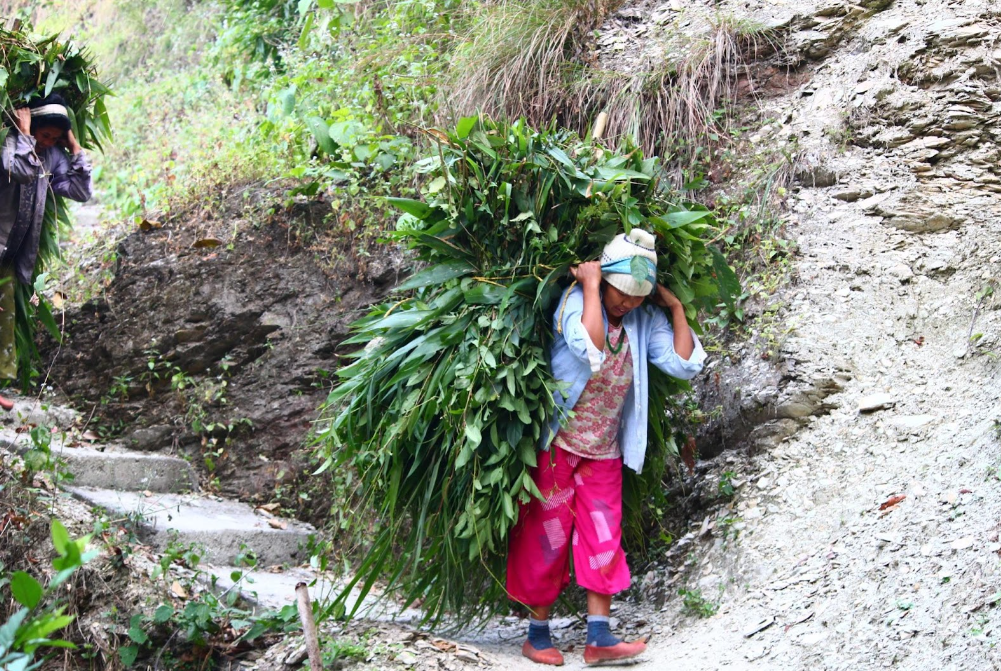Soil Carbon Sequestration & Rural Women’s Impact

This post is also available in:
This post is also available in:
![]() हिन्दी (Hindi)
हिन्दी (Hindi)
Rural Women play a significant role in carbon sequestration in the soil through biomass production and perennial crop cultivation-care. Women are also crucial in promoting sustainable farming practices that can help sequester carbon.
How do rural women contribute to soil carbon sequestration?
A study by the Food and Agriculture Organization of the United Nations found that women-led projects are more effective at sequestering carbon than those not led by women. The study found that women are more likely to use sustainable land management practices and participate in community-based projects.
Rather than launching brand-new (untested and expensive) carbon farming projects and initiatives, providing more support to the thousands of female farmers and organizations already developing perennial crops, biomass crops, cropping systems, and other carbon-sequestering practices could be proved a more efficient strategy.
Women are often responsible for managing land and natural resources in rural areas. When women are empowered, they are more likely to invest in sustainable land management practices, such as agroforestry, which can help sequester soil carbon. Rural women are also more likely to use organic farming practices, which can also help sequester soil carbon. Women are responsible for collecting fuelwood and other biomass. When women have access to energy, such as solar power, they are less likely to clear forests for fuelwood, which can help to protect carbon-rich soils.
Women are also more likely to be involved in community-based projects that promote sustainable land management practices. These projects raise awareness of carbon sequestration’s importance and provide women with the resources they need to implement these practices.
Practicing Agroforestry
Agroforestry is a system of farming that integrates trees with crops and livestock. It can help sequester carbon by increasing the amount of biomass on the land and providing shade, which helps reduce evaporation. Women are involved in agroforestry projects in developing countries.
Planting Perennial Crops
Perennial crops are the crop plant species that live for three years or more. All perennials sequester carbon. When you combine perennial crops with no-till and non-destructive harvest practices, you get plants that yield for many years and hold their carbon in place. Perennial crops have reduced the need for fuel, fertilizer, and pesticides. Carbon farming systems include essential tools for reducing agricultural fossil fuel emissions. Non-destructively harvested perennials can provide thatch, wattles, insulation, roofing tiles, bamboo poles and plumbing, construction timbers, and other materials.
Biomass Crops
Today the world’s number one biobased industrial feedstock is cellulose from wood pulp. Unlike most industrial crop categories, petroleum-based synthetic products have never threatened or replaced biomass. Paper and cardboard are the most critical biomass products today. Natural building materials represent A significant (and ancient) use of biomass. Buildings can represent long-term storage for the carbon embedded in these biomass products.
Sustainable Irrigation Practices
Drip irrigation and water harvesting can help reduce water use and evaporation, leading to increased carbon sequestration in the soil. Women are often responsible for irrigation in developing countries.
Adopting Climate-Smart Agriculture Practice
Climate-smart agriculture practices are those that help to adapt to the effects of climate change while also reducing greenhouse gas emissions. Women are often at the forefront of adopting these practices, as they are disproportionately affected by climate change.
In addition to these specific practices, women can also help to promote carbon sequestration in soil by advocating for policies that support sustainable agriculture. They can educate other farmers and community members about the importance of carbon sequestration and how it can be achieved. Women can help to mitigate climate change and build a more sustainable future.
Cover photo of the article is taken by Soma Saha









































































